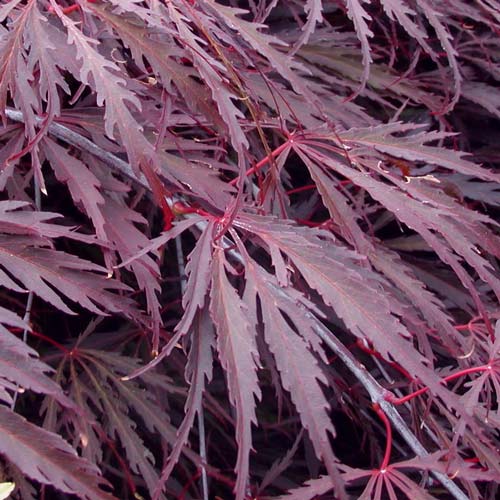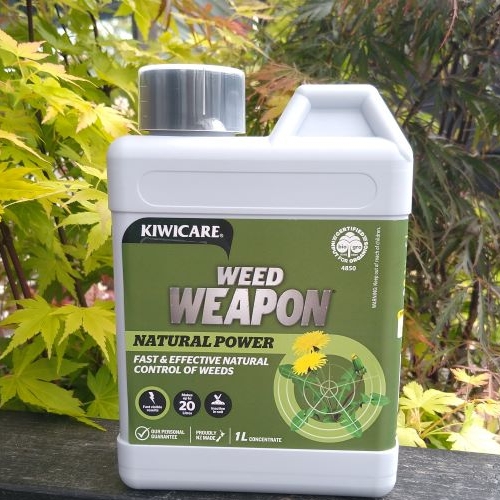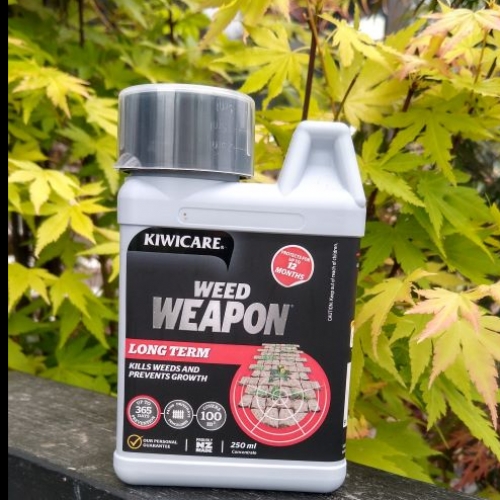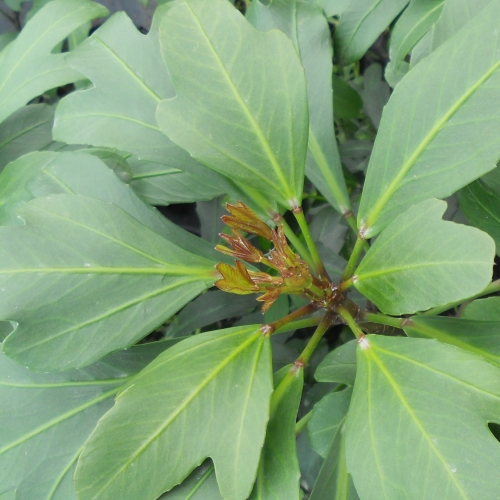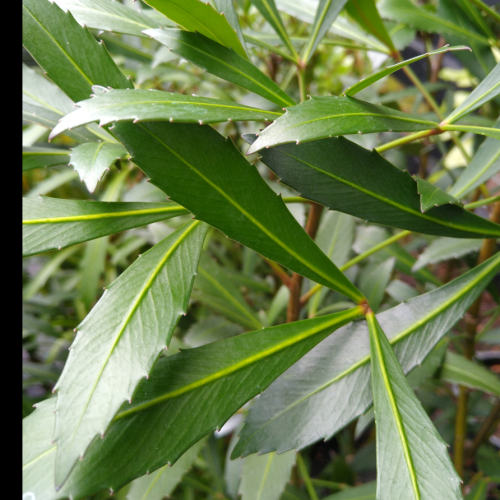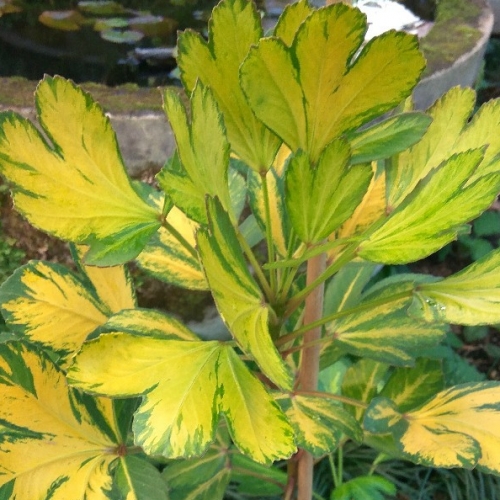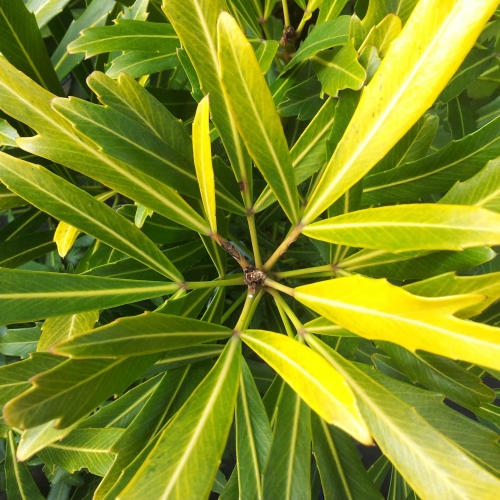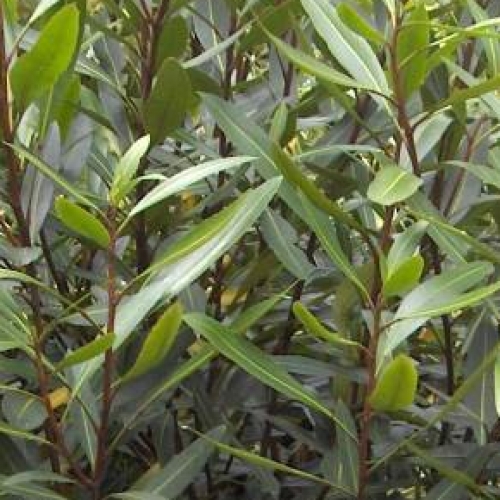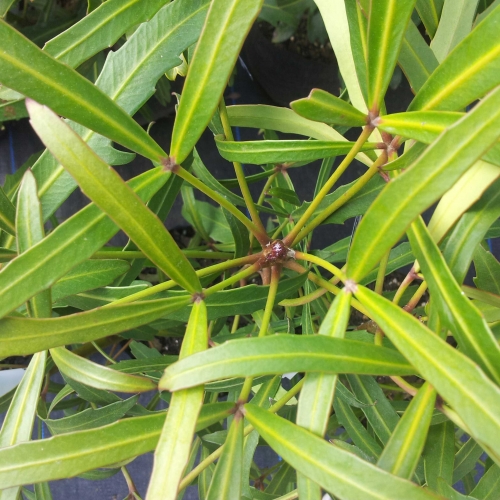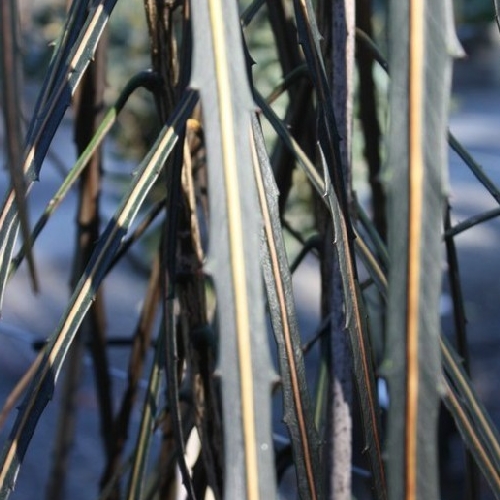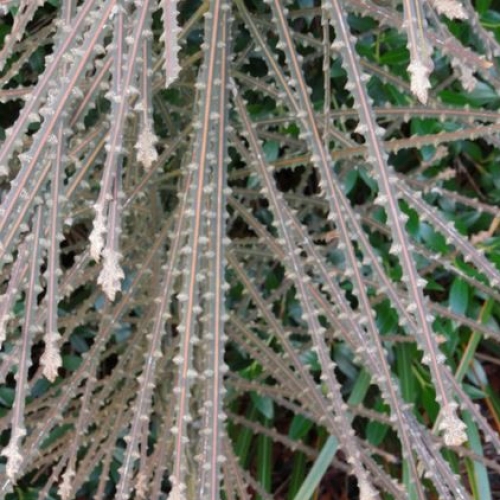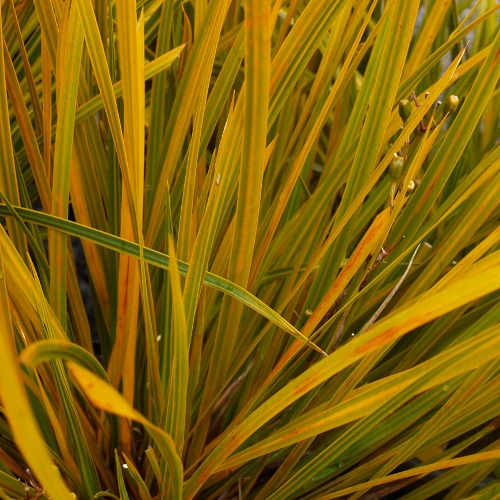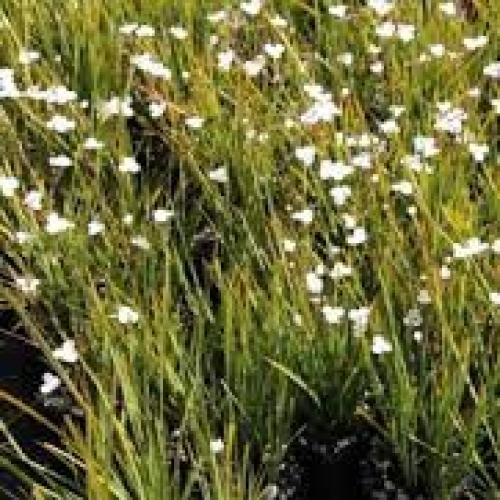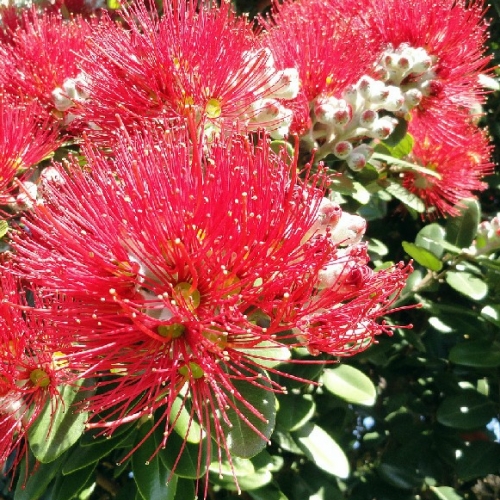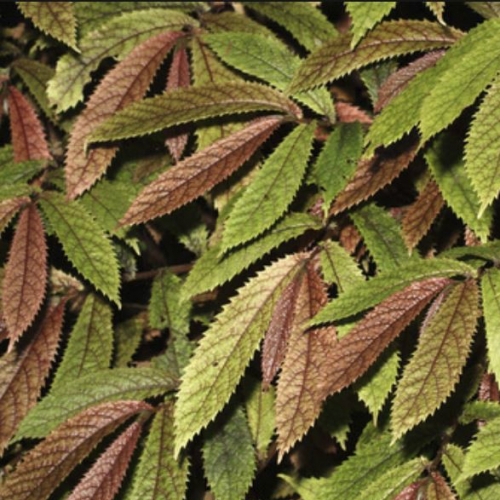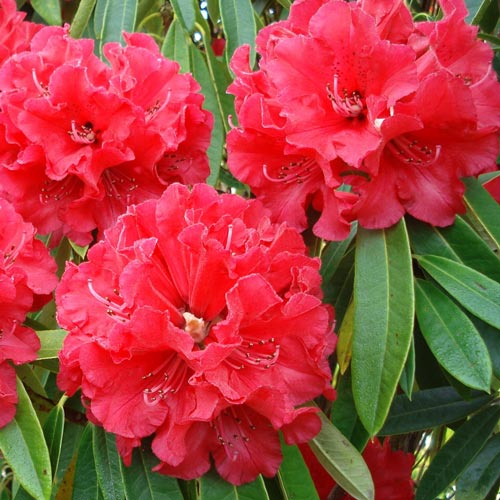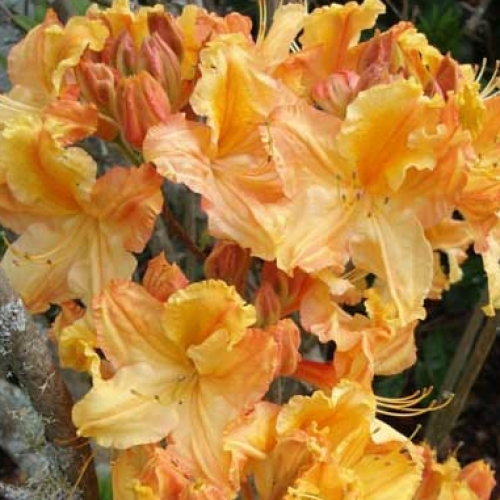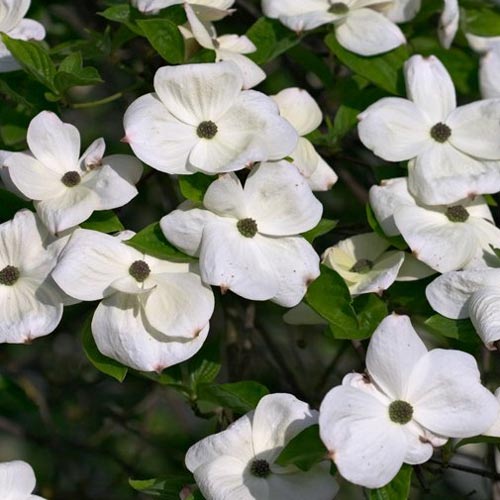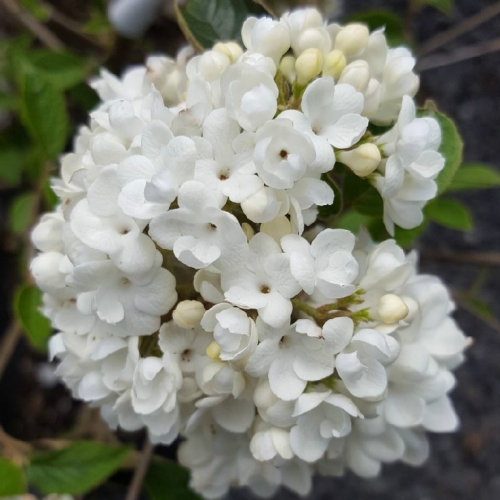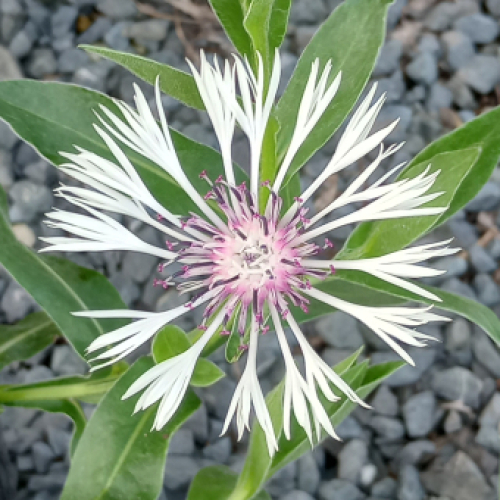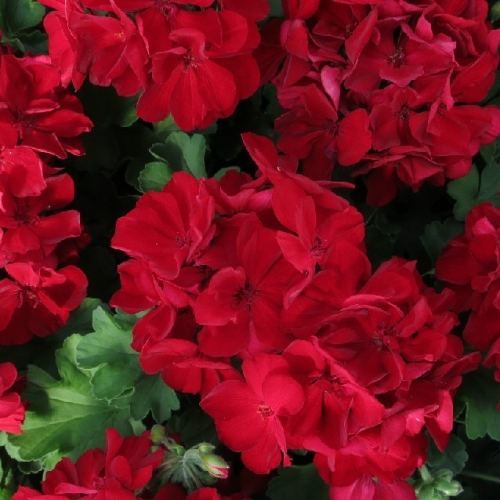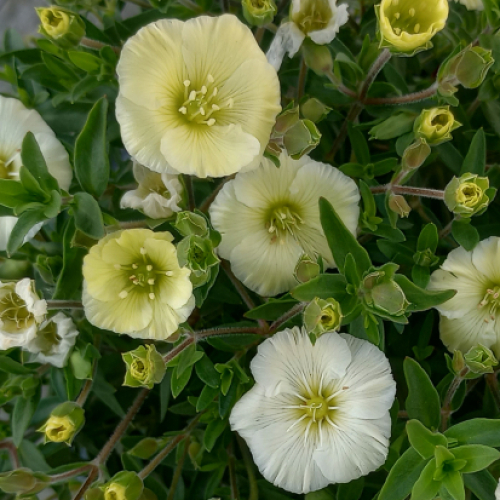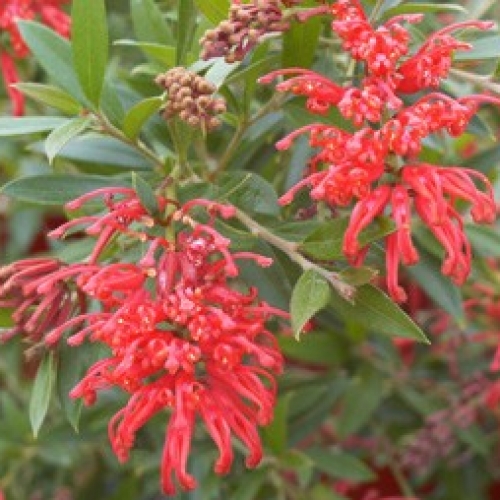Saturday 12th October, 2024
Hi
The pace just gets faster
It must be the season of speed because I'm sure that we literally just can't keep up with the rate of growth. Every morning I look out on this most gorgeous maple and, taking a stab at its name because I never planted it, I think it's a
Princeton Gold. A week or so ago its pretty lime green leaves had just started but now, every day, there are more and more. I guess that it has still a week or two to go before it's fully furnished but I love just looking at it daily and enjoying its journey into the new season and the roll out of foliage.
But this is more about the speed at which the weeds are growing and how important it is to maintain weed control. Now I've made my opinion on weed cloth clear before, and my stance hasn't changed, in that personally it's not a way to garden. I much prefer to plant to exclude light, but it's the time before it gets to that point when weed control is probably the most important. Generally, I would say a couple of years, which I reckon is about how long weed cloth will help.
We have undertaken quite a bit of new planting in and around the nursery and its surrounds of late. Some of these include mass plantings of wetland
grasses and we have learnt that once they are fully grown, then the weed maintenance in these areas is pretty minimal but it's that stage of getting them there that's crucial, especially in a lovely warm and wet spring. Mulch, of a coarse nature applied to a good thickness, works wonders as it excludes light from the soil that would easily germinate weeds. If you do get some weeds then spot spray them and don't disturb the mulch surface.
In some places we haven't mulched and its really important to sort the weeds there before they become a problem. Careful spot spraying is our answer here, and keeping a vigilant eye out so as to get the weeds while they are small. Controlling the weeds at seed leaf stage, or just past, is the best time and gets the best result. At this stage using more organic desiccant herbicides like
Weed weapon can be really effective. I have also found that these organic herbicides are the best around grass plantings as they don't translocate through the green plant tissues and end up in the grasses. They kill young seedling weeds by desiccation. The methodology is to be thorough with coverage and constant in application and not let anything grow past seed leaf into a more vigorous stage. As the desired plants grow and fill out and then cover the space around them you gain the desired outcomes.
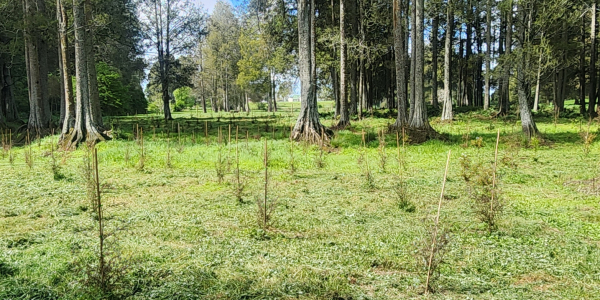
I have also written before of the project of restoring out native
Kahikatea forest behind the nursery, and between the team we have planted hundreds of these small white pines and again weed control is upper most in my mind with these. The willow weed out there last year was pretty daunting and it could easily turn into a disaster. The scale is pretty big and so what we do has to be effective and so just after planting I sprayed the weeds around each plant with Roundup which has done an awesome job. Roundup does translocate, but mostly through green tissues, and doesn't seem to cause problems with these woody trees (as long as you carefully spray around them, not on them!). At this point though there is bare earth left and the willow weed is coming away quick as it loves this damp warm weather and so I will go around again and knock these back. The other trick up our sleeve is the weed eater and Buster and I have been out there knocking back the weeds that grow between trees. This effort is going to have to be regular and constant for a couple of years, but after that hopefully the plantings will shade out the surrounds, and we will win!!!!
NZ flora is pretty cool with the Pseudopanax
There are many
Pseudopananx, or I guess more commonly known as
Five fingers because of their hand like leaf structure.
Pseudopanax lessonii is probably one of the species that have hybridized or are found as natural hybrids out there in the wild and there are quite a few ornamental forms. If I generalise a tad more this species of lessonii is the coastal form and therefore tolerant of quite sunny positions that are well drained. If you imagine the NZ coastline you will see lessonii growing in quite rocky situations in sun and shade, but I would say predominantly in the sun or well-lit.
Most of these form large shrubs or perhaps small shrubby trees and so make for great garden plants as they are also pretty tough and hardy and respond well to being cut back. Not only for the garden: if you are looking for a plant for a container then these will do very well as a foliage plant in a pot on your deck or patio area.
Pseudopanax are generally grown for their foliage effect and their cultivar name on the whole describes their look. They are evergreen and their highly ornamental and interesting leaves come in a range of colours and shapes, all of which makes them very useful for group or accent planting.
Pseudopanax Gecko Gold. A lovely variegated sport of Cyril Watson. Glossy rounded leaves with equal splashes of bright yellow. A hardy shrub that provides colour all year round.
Pseudopanax Sabre. An interesting architectural plant has very long narrow foliage in deepest green with an orange mid-rib. The leaves are undulated and hang downwards. Stiff upright habit.
Then there are a couple of other Pseudopanax species that have always been popular for designed gardens which I am sure that most will be familiar with being
crassifolium or lancewood and the other is
ferox or savage lancewood. Like many New Zealand natives these have a juvenile form which is very distinctive and stays like this for many years. After somewhere between 10 and 20 years these lose their lower leaves and almost become topiary-shaped with a multi branched head. The leaf shape changes and becomes shorter and more like a traditional Pseudopanax, and I have to say I really like this stage and form though I imagine this is pretty hard to plan for...
We haven't had these NZers for a while
Libertia Gold finger. What a delightful little plant this native Iris is. Striking golden variegated foliage that forms a strong clump. Dainty little white butterfly flowers appear in summer followed by ornamental seed pods. Easy to grow in a sunny position in average soil. Evergreen.
Metrosideros Octopussy STD Native - An unusual form of our favourite native Pohutukawa that has a distinctive weeping, spreading growth habit. Distinctive showy red blooms in summer that birds and bees love. Plant in a sunny spot and protect from harsh frost. Evergreen.
Native Begonia, Parataniwha, or Elatostema rugosum. This shade-loving herbaceous ground cover also loves the damp. Found at the base of waterfalls and along streams and gullies so plant where consistent moisture is available. Filtered light will bring out the bronze tones but full shade is enjoyed by this lovely native perennial. Looks great co-planted with ferns.
Garden Events
Diamond Jubilee Te Awamutu Rose Society 60th Annual Spring Rose Show Friday 1st Nov 1pm to 4pm & Saturday 2nd November 9am to 3 pm.
Venue Ta Rugby sports and recreation club, 420 Albert Park Drive.
Daltons Waikato Rose Society Spring Show held in the Hamilton Gardens Pavilion, Saturday 9th November 12.30 to 5pm & Sunday 10th November 10am to 4.30pm.
Taranaki Garden Festival will soon be under way, starting November 1st and ending November 10th.
The Franklin Hospice Barfoot & Thompson Garden Ramble will take place on 16 & 17 November this year.
This year the Garden Ramble will feature 17 gardens in the Runciman, Bombay, Paerata and Harrisville areas. Get swept away by the charm and diversity of these extraordinary Franklin gardens, where every step is a discovery, and every moment is a celebration of our gardeners' and nature's finest creations! Your ticket gives you access to the gardens and our bespoke market throughout the weekend.
Purchase your ticket from Eventbrite at https://garden-ramble.eventbrite.co.nz
I hope that you are all taking the time to wander around your garden... It's a beautiful time of year with all the shrubs starting to come into flower and looking spectacular. I know that in my garden the
Rhodos have been flowering, as are the
Deciduous Azaleas, and they really provide bright colour. The
Dogwoods are just looking stunning as are the
Viburnums. So take the time and enjoy your garden's palate of colour.
We have had Tony's, sister, niece and nephew come and stay for a few nights and yesterday they climbed up to Wairere Falls over by Te Aroha. A good day was had by all and now it's the last weekend of the holidays before it is back to school for all next week. It's time to enjoy your own garden and get out and about and see what others create as once the flowering and growing is all but done, it will be time to trim, shape and return the garden to its form in time for Christmas.
If you are one of those that love to buy colour then now is the time to visit the nursery as the
roses start to flower and the fluffies and fillers arrive.
Have a great weekend.
Cheers from Lloyd, Tony and the Wairere team.


